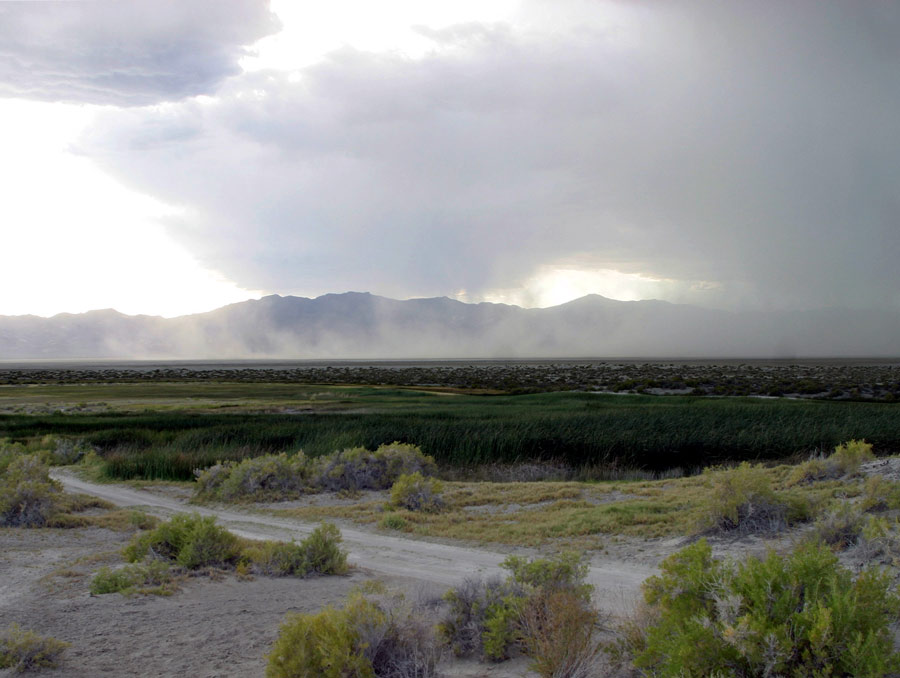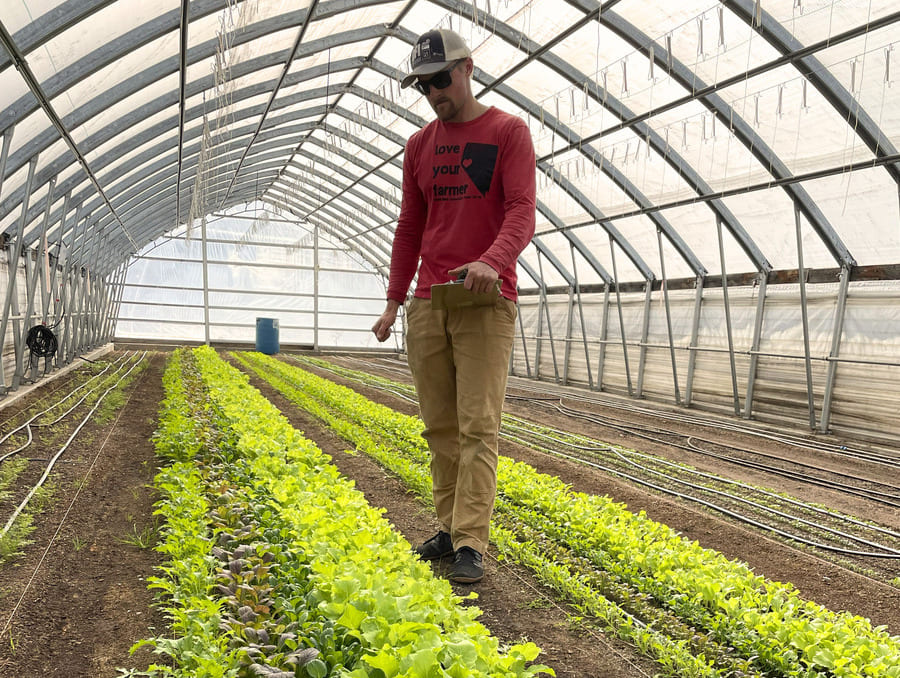Associate Professor in the Department of Geography Steph McAfee serves as Nevada’s State Climatologist. She recently published an update about Nevada’s drought, which was shared through the Living With Drought program and is published below. Living with Drought is a collaborative program that provides information to help Nevadans prepare for, respond to and recover from drought.
More than three quarters of the state are fully drought-free. Moderate drought remains in the south.
Current drought conditions in Nevada and across the West
In far southern Nevada, D1-Moderate Drought and D0-Abnormally Dry conditions persist, leaving only Clark County in Drought Watch. This long-term drought reflects the fact that area precipitation has been below normal in most months since the beginning of 2020.
Since the end of June, the last small strip of D0-Abnormally Dry in eastern Elko County was removed. D2-Severe Drought conditions in Clark County improved to D1-Moderate Drought. In Lincoln and Nye counties, some of the D1-Moderate Drought improved to D0-Abnormally Dry, and some D0-Abnormally Dry areas were deemed just normally dry.
Nearly 80% of the state is drought-free, and there is no D2-Severe or more significant drought for the first time since April 2020. At this time last year, nearly a third of the state was in D4-Exceptional Drought, and 99.5% of the state was in at least D2-Severe Drought.
The late onset of the monsoon contributed to the introduction of D0-Abnormally Dry or worsening of drought conditions in New Mexico and southern Arizona. Dry conditions persist in the Pacific Northwest, as well. Parts of Oregon, Washington, Idaho and Montana are now in D2-Severe Drought.
July temperature and precipitation
Anyone who wanted some hot, dry weather got their wish in July. Average monthly temperatures ranged from 1 F to more than 6 F warmer than normal across most of the state. There were also small spotty areas of near or even slightly cooler than normal temperatures.
In many places, the daytime high was near or above normal on most days. There were some cooler than normal nights in northern Nevada mid-month. By the end of the month, nighttime lows were much higher than normal in southern Nevada. In Laughlin, lows were in the 90s on 11 nights.
The high temperatures also came with mostly clear skies. Large parts of the state got less than 25% or even 5% of the usual precipitation.
That's not entirely unusual. In northern Nevada, July is typically dry. Since 1937, Reno-Tahoe International Airport has had seven Julys with no rain at all. In another 30 years, there was less than 0.1" of rain in July. In Elko, July has delivered less than 0.1" of rain in 41 of the 131 years with complete records for the month. The onset of the Southwest Monsoon normally means that southern Nevada is wet-ish in July. This year, the monsoon was a bit tardy. Even light, spotty precipitation didn't start until after mid-month. As is typical for summer, a few areas did get solid storms. There are localized areas of near or above-normal precipitation in Washoe, Elko, White Pine and Nye counties.
If you look up at mountains, there might still be some snow way up high. I couldn't find any weather stations showing snow still on the ground, but the Mt. Rose Ski Area still had 2 inches of snow on the morning of July 8.
Soil moisture
Hot, dry weather in July dried out surface soils over much of the state, according to the 9km SMAP product. There were still areas where surface soils appeared wetter than normal, possibly due to isolated storms during the middle of the month. Owing to the very wet winter, deeper soils are still wetter than normal across much of northern Nevada. Across southern Nevada, both surface and subsoils remain drier than normal.
Climate Prediction Center soil moisture anomalies are similar to SMAP over western Nevada but do not look as dire in southern Nevada.
Water resources
Almost all of Nevada's reservoirs are at or above their usual late-July levels. Even Rye Patch Reservoir, which has been low for a long time, is more than half full. Lake Mead, on the Colorado River, was at only 32% capacity. However, water levels did rise from 1,056.4' at the end of June to 1,061.0' by the end of July. Under the most probable inflows, Lake Mead levels will continue rising through winter, then drop through spring 2024. Over the next 24 months, reservoir levels will generally remain within Level 1 Shortage Conditions. Water supply plans for the coming year are pending, however. Annual operating plans are available from the Bureau of Reclamation.
Statewide, most stream gages reported near or above normal flows. Management can play a role, as it does in the low flows on the Truckee Canal. The two below-normal sites in southern Nevada are both springs, and low flows may be related to long-term precipitation shortfalls.
Looking forward
Will the rest of the summer and early fall be wet, dry or normal? For Nevada, there are equal chances of all three possibilities this year. The outlook for the rest of the monsoon is leaning toward drier than normal conditions in the Four Corners.
The temperature outlook is somewhat more definitive, with slightly higher than even chances that temperatures will be above average.
Drought conditions in southern Nevada are unlikely to improve in the coming months. Summer rain is always welcome, but high temperatures lead to high evapotranspiration so there's less bang for the buck (or inch). In the last month, the Climate Prediction Center flagged potential for drought development over western Colorado and eastern Utah. This area provides most of the water for the Colorado River, so this is a concerning development. In good news, there's currently no indication that drought is likely to develop over northern Nevada in the next few months.
After a wet winter, grass and shrub growth has been lush by Nevada standards. As hot, dry summer weather arrived, that vegetation has started to dry, becoming flammable. Owing to the amount of dry fuels, the possibility for big fires is higher than normal in northwestern Nevada in August and September. Wet conditions and late melt mean that fire risk remains lower than normal in the Sierra Nevada over the next two months, which is something of a relief. However, significant wildland fire risk is higher than normal across Washington, Oregon, and large parts of Idaho through September, creating the potential for air quality issues in northern Nevada when winds are right, so re-bookmark AirNow.gov on your phone now. We've been lucky with wildfire so far this year, but it's always a possibility during fire season, as the York Fire shows, so plan to be fire safe and prepared.
















